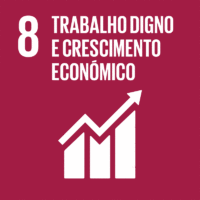Ciência_Iscte
Comunicações
Descrição Detalhada da Comunicação
The multidimensionality of retirement in an effervescent world: retirement transition profiles
Título Evento
XI Congresso Português de Sociologia
Ano (publicação definitiva)
2021
Língua
Inglês
País
Portugal
Mais Informação
Web of Science®
Esta publicação não está indexada na Web of Science®
Scopus
Esta publicação não está indexada na Scopus
Google Scholar
Esta publicação não está indexada no Overton
Abstract/Resumo
Aging populations pose a persistent challenge to the sustainability of public pension systems, leading many countries to strength the incentives to work by increasing the statutory retirement age and reducing early retirement benefits. These policy reforms make retirement a topic of utmost importance for individuals, organizations, and societies. Retirement can be conceptualized as a decision-making process that occurs over time and that involves several reflections and decisions about when and how people will enroll in retirement (Beehr, 1986; Moen, 2012). In the transition to retirement, individual (e.g., age, gender, education) and situational (e.g., eligibility, family commitments, organizational policies) factors interact in a dynamic away, and their relevance is different from person to person (Fisher, Chaffee, & Sonnega, 2016). Thus, research on retirement has demonstrated the multidimensionality and complexity of this process. Despite the important advances in understanding the antecedents of retirement, studies are often based on questionnaires, a methodology that does not capture the quality and diversity of individual experiences. Thus, it is important to combine distinct methods to investigate the multidimensional nature of retirement
This study examines the interdependence of individual and work-related factors in the definition of retirement transition profiles. Moreover, the association between these profiles and retirement timing (i.e., early, on-time, and later retirement) was also analysed. Semi-structured interviews were conducted with older workers (55 years old or over) and retirees who were retired for fewer than five years. Data analysis combines qualitative (i.e., content analysis) and quantitative (i.e., Multiple Correspondence Analysis and Cluster Analysis) methods.
The findings revealed three profiles that represent different associations among the individual and work categories that characterize the retirement transition. The first profile also stated as push factors, was characterized by predominance of negative aspects at both individual and work level that induce workers to retire (e.g., negative relationships at work, high negative experiences at work, poor health). The second profile, called push and pull factors, was characterized by negative aspects that push people to retirement (e.g., negative experiences at work, job dissatisfaction) and positive factors that attract workers toward retirement (e.g., having dependents, retired spouse or partner). The third profile, known by stay factors, was characterized by factors that make employment seem more attractive than retirement (e.g., high positive experiences at work, spouse/partner not being retired). These results suggest that mixed approaches are especially important for acknowledging the inter-individual variability in the transition to retirement.
Agradecimentos/Acknowledgements
--
Palavras-chave
retirement,retirement profiles,cluster analysis,multiple correspondence analysis
Classificação Fields of Science and Technology
- Psicologia - Ciências Sociais
- Economia e Gestão - Ciências Sociais
Registos de financiamentos
| Referência de financiamento | Entidade Financiadora |
|---|---|
| SFRH/BD/115007/2016 | Fundação para a Ciência e a Tecnologia |
Contribuições para os Objetivos do Desenvolvimento Sustentável das Nações Unidas
Com o objetivo de aumentar a investigação direcionada para o cumprimento dos Objetivos do Desenvolvimento Sustentável para 2030 das Nações Unidas, é disponibilizada no Ciência_Iscte a possibilidade de associação, quando aplicável, dos artigos científicos aos Objetivos do Desenvolvimento Sustentável. Estes são os Objetivos do Desenvolvimento Sustentável identificados pelo(s) autor(es) para esta publicação. Para uma informação detalhada dos Objetivos do Desenvolvimento Sustentável, clique aqui.

 English
English


